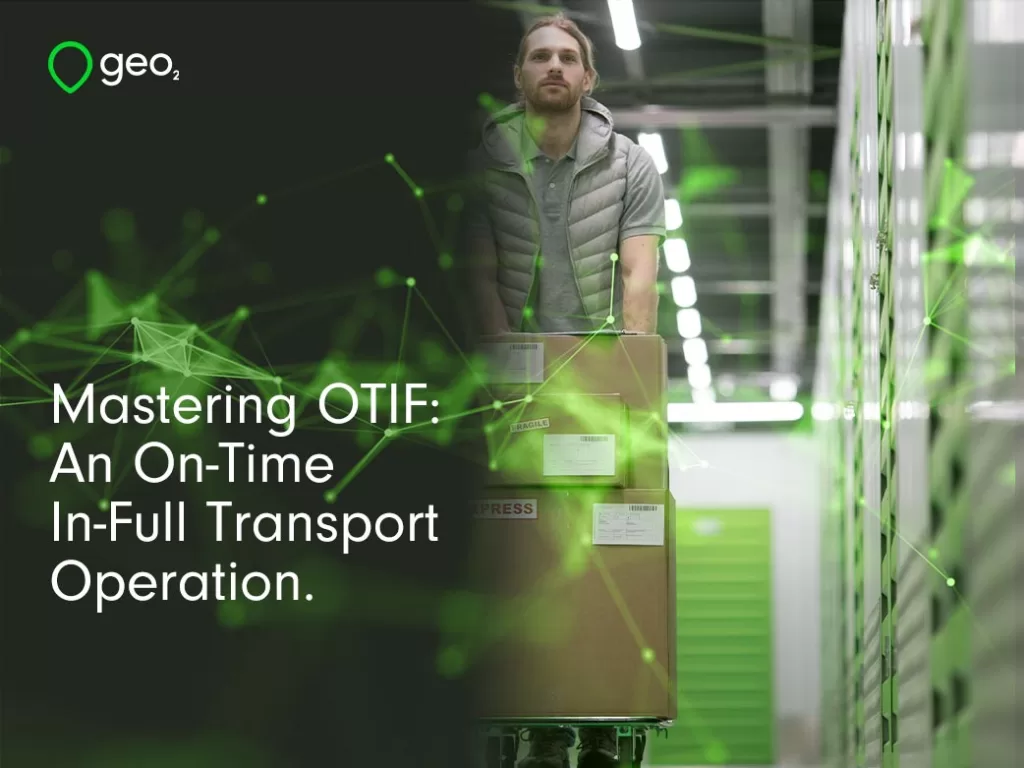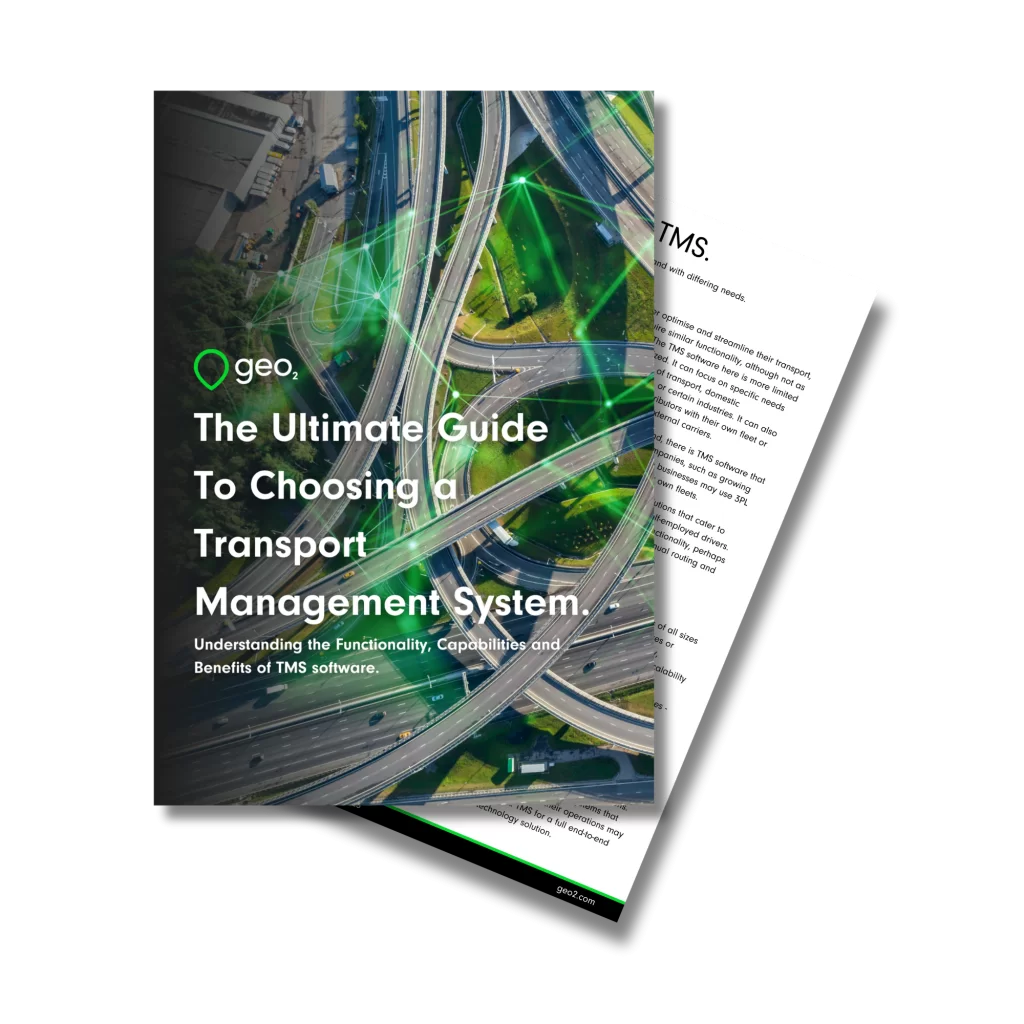
Mastering OTIF: An On-Time In-Full Transport Operation.
In today’s fast-paced business world, success hinges on one crucial measure — On-Time In-Full. OTIF is no isolated term.
It shows how well a supply chain works, reflecting how goods move from factories to customers with punctuality and precision. For logistics and supply chain professionals, doing well in On-Time In-Full is like putting on a show that goes beyond customer expectations and meets the CFO’s focus on keeping costs low.
Need help choosing a TMS?
Download the Free Guide Now.

Table of Contents.
Unearthing the Significance of OTIF.
At its core, On-Time In-Full is a commandment, the holy grail of logistics management. To be ‘On-Time’ denotes precision to schedule, a staunch vow to the calendar. ‘In-Full’ is a covenant of completeness, an unwavering commitment to quantity. Together, they form an allegiance to customer service that transcends mere delivery – it’s a harmonious blend of timeliness and exactness.
In the grand narrative of supply chain, OTIF serves as an tireless enabler of operational efficiency. This single metric weaves the supply chain’s disparate nodes – procurement, manufacturing, warehousing, and transportation – into a cohesive unit. OTIF brings all these different departments together to make sure inventory flows smoothly and boosts profits in the end.

Table of Contents.
OTIF Meaning.
OTIF is not merely a metric; it embodies a mindset. It signifies a culture of accountability and ongoing enhancement, where all supply chain stakeholders comprehend their responsibilities in attaining and upholding OTIF excellence. Whether suppliers, manufacturers, or logistics providers, each one has a pivotal role in ensuring timely and complete delivery of goods.
At its core, OTIF is about keeping promises – to customers, to partners, and to shareholders. It’s a reflection of a company’s ability to fulfill commitments made in the sales process and build trust with its stakeholders.
OTIF Definition.
On-Time In-Full, or OTIF, is a supply chain performance metric that measures the percentage of orders delivered to customers on time and in full. It takes into account both the punctuality of delivery (On-Time) and the accuracy of quantity (In-Full). This metric shows how well things are running and if customers are happy, pointing out supply chain problems that require attention.
In addition to being a performance metric, OTIF also acts as a benchmark for companies. It helps them compare their performance to industry standards and competitors. This tool is crucial for pinpointing areas needing improvement and setting goals for future success and growth.

How Is OTIF Calculated?
On-Time In-Full is calculated by taking the total number of orders that were delivered on time and in full, divided by the total number of orders. This gives a percentage score, which serves as a clear indicator of supply chain performance.
To break it down further, let’s look at the two components that make up OTIF: “On-Time” and “In-Full.”
On-Time Deliveries Requirements:
- The company needs to deliver goods as per the agreed schedule with the customer.
- This involves meeting delivery deadlines and following any specific time windows or customer requirements.
The “In-Full” component assesses whether the entire order was delivered as expected. This means that all items must be accounted for and delivered in the correct quantities, with no missing or damaged items. This requires a high level of accuracy and precision in the fulfillment process.
By merging these two parts, On-Time In-Full offers a complete look at supply chain performance, highlighting any timing or completeness concerns. A high OTIF score shows a smooth and trustworthy supply chain, while a low score suggests areas to enhance and optimize.
Benefits of OTIF: What Are The Upsides?
Mastering On-Time In-Full leads to significant benefits across various business aspects. Firstly, it elevates customer satisfaction levels. Prompt order fulfillment helps businesses meet customers’ needs, leading to loyalty, positive recommendations, repeat purchases, and brand advocacy.
Secondly, OTIF contributes to financial prudence by optimizing operations. Timely deliveries allow companies to avoid costly penalties and rigid contractual obligations. Complete deliveries reduce stockouts, eliminating the necessity for expensive rush shipments or emergency restocking. Skillful OTIF implementation acts as a strategic tool to minimize supply chain inefficiencies and excessive spending.
Lastly, On-Time In-Full plays a crucial role in nurturing strong supplier relationships. Suppliers are vital components of the supply chain, and maintaining positive partnerships can enhance a company’s procurement capabilities. Upholding OTIF standards helps in building rapport with suppliers, creating mutually beneficial and long-lasting collaborations that support business growth.
Cons of OTIF: Are There Any Downsides?
With all its merits, mastering On-Time In-Full does come with a few challenges. Meeting specific delivery deadlines and accurately completing orders is a big challenge, especially in the intricate network of worldwide supply chains. Handling multiple orders at once or adjusting to sudden demand changes can make it tough to achieve high OTIF scores.
Moreover, some argue that putting all focus on On-Time In-Full alone may encourage a “game the system” mindset. This could lead companies to prioritize scoring well rather than tackling fundamental supply chain issues.
While OTIF is an essential metric, it should not be the sole measurement of success in supply chain operations. Instead, businesses should strive towards overall operational excellence and use OTIF as one of many performance indicators.
Additionally, external factors like natural disasters, political unrest, and transportation delays can influence OTIF. Even though these are out of a company’s control, they can impact OTIF scores and need to be considered when assessing performance.

Improvements That Can Be Made To OTIF.
As supply chain management evolves with the rapid pace of technology, so should OTIF. Businesses need to constantly enhance their OTIF performance to meet evolving times and customer expectations.
One improvement that companies can make is investing in real-time tracking and visibility tools. These technologies allow for better monitoring and control over shipments, reducing the likelihood of delays or errors. Another way to enhance is by taking a proactive approach to supply chain management. This means predicting problems and dealing with them before they affect OTIF scores.
Furthermore, companies should also prioritize collaboration and communication within their supply chain network. By working closely with suppliers, manufacturers, and logistics partners, businesses can streamline operations and ultimately improve OTIF performance.
In short, On-Time In-Full is vital in modern supply chain management, combining timeliness and completeness. Mastering OTIF brings benefits like happy customers, cost savings, and better supplier ties. As businesses advance in supply chain practices, keep refining On-Time In-Full for top performance.
How To Measure Performance Utilizing the OTIF KPI.
To measure performance with On-Time In-Full, you need to know its parts and how they affect the supply chain. Analyzing OTIF scores breakdown helps pinpoint areas for enhancement.
Another factor to consider is setting realistic goals for OTIF performance based on industry benchmarks and internal capabilities. This allows companies to track progress over time and identify areas for further improvement.
It’s important to set up a reliable way to measure and report OTIF scores for accurate performance assessment. Regularly analyzing this data helps businesses make informed decisions to enhance supply chain operations and overall performance.
Moreover, it’s helpful to regularly review and assess OTIF performance. This helps evaluate the impact of improvement actions and find areas for further enhancement.
Using the OTIF KPI well helps businesses excel in the supply chain industry. Mastering On-Time In-Full through continuous improvement and data-driven decisions boosts efficiency, cuts costs, and drives success.

How To Avoid OTIF Delivery Fines.
Mastering On-Time In-Full leads to significant benefits across various business aspects. Firstly, it elevates customer satisfaction levels. Prompt order fulfillment helps businesses meet customers’ needs, leading to loyalty, positive recommendations, repeat purchases, and brand advocacy.
Secondly, OTIF contributes to financial prudence by optimizing operations. Timely deliveries allow companies to avoid costly penalties and rigid contractual obligations. Complete deliveries reduce stockouts, eliminating the necessity for expensive rush shipments or emergency restocking. Skillful OTIF implementation acts as a strategic tool to minimize supply chain inefficiencies and excessive spending.
Lastly, On-Time In-Full plays a crucial role in nurturing strong supplier relationships. Suppliers are vital components of the supply chain, and maintaining positive partnerships can enhance a company’s procurement capabilities. Upholding OTIF standards helps in building rapport with suppliers, creating mutually beneficial and long-lasting collaborations that support business growth.

Where Has OTIF Been Successful?
On-Time In-Full has proven successful in various industries such as manufacturing, logistics, and retail. Companies implementing OTIF strategies have seen improvements in delivery performance, customer satisfaction, and overall operational efficiency. The focus on timely and complete deliveries has helped streamline processes and enhance supply chain management.
Nestlé’s Commitment to Precision.
Nestlé’s achievements in the field of OTIF, with rates consistently surpassing 95%, showcase the quality of advanced demand forecasting. This reflects the strategic supplier and carrier engagement necessary for OTIF excellence.
Amazon’s Logistical Innovation.
Amazon’s mastery of supply chain logistics and data analytics, coupled with efficient delivery networks, showcases large-scale OTIF implementation. This ensures precise fulfillment even during peak demand.
IKEA’s Inventory Optimization.
IKEA’s strategy resulted in an impressive 20% increase in OTIF performance. This highlights the critical role of actionable inventory management and astute forecasting as key elements in the OTIF framework.
Unilever’s Continuous Improvement Paradigm.
Embracing a philosophy of perpetual improvement and tech-centric monitoring, Unilever has minimized stockouts judiciously, enhancing on-time delivery. This success is a testament to the potent combination of innovative thinking and practical action in OTIF.
Walmart’s Strategic Investments.
Walmart exemplifies the efficacy of strategic investments in transportation and rigorous vendor compliance. They have achieved an enviable 98% rate in OTIF—a beacon for others striving for similar supply chain zeniths.
Nestlé’s achievements in the field of OTIF, with rates consistently surpassing 95%, showcase the quality of advanced demand forecasting. This reflects the strategic supplier and carrier engagement necessary for OTIF excellence.
Conclusion.
These success stories show how OTIF boosts operational excellence and shapes industry leaders. By using this metric in supply chain plans, businesses can enhance performance, boost customer satisfaction, and gain a competitive edge.
Symphony is here to help companies excel in OTIF with smart solutions and expert advice. Let us partner with you to optimize your supply chain for success in today’s fast-paced industry. Embrace OTIF, embrace innovation, and let Symphony lead you to a bright future in supply chain management.






